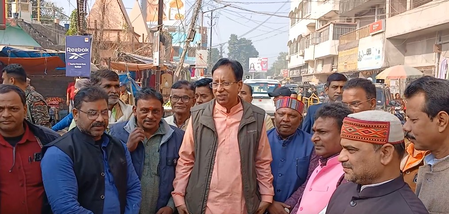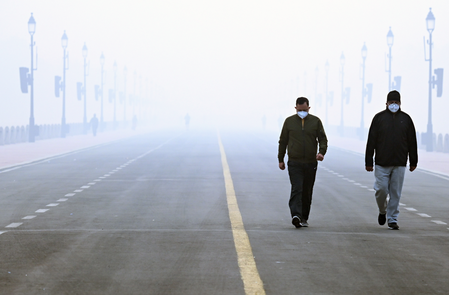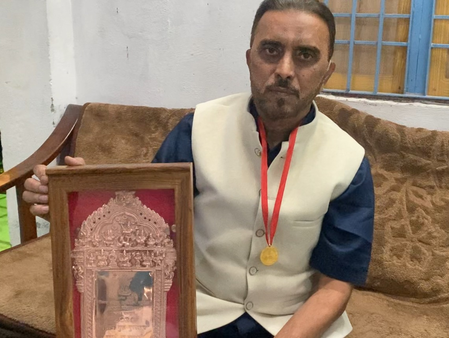
New Delhi, Oct 27 (IANS) When Uttar Pradesh Chief Minister Yogi Adityanath stated “Batenge toh katenge (if we are divided, we will be destroyed),” it touched the nerve of a community that was uprooted from their homeland Kashmir over three decades ago.
CM Yogi’s words may be fodder for many of his detractors, particularly the Opposition, but the truth, however, cannot be put under wraps.
The Pakistan-sponsored terror-separatist nexus took advantage of a community that was already very small in number in Kashmir and totally disjointed. There was no central leadership of the two per cent Kashmiri Pandit (KP) population in Jammu and Kashmir and the community was living in concentrated pockets in various parts of the valley.
The community’s political inclination was also varied. And, they had a plethora of organisations which guided segments of their followers and supporters. Often there was bickering, and disagreements were profound.
The only time the community stood together was in 1967 during the Parmeshwari agitation when a KP woman was ‘forcibly’ married to her Muslim co-worker. The agitation was intense as the community took to the streets in unprecedented large numbers, spearheaded by women.
The then government, in order to break the agitation, resorted to mass arrests of the community members. The central jail was filled with hundreds of arrested people. The month-long agitation ended as the leaders could not sustain it and the united majority community also took to the streets unleashing terror on the minority. The then government at the Centre constituted a single-man commission headed by the Retired Chief Justice of India P. B. Gajendargadkar, to look into the grievances of the community. But nothing happened.
After the 1967 agitation, the community failed to come up as a unified force. This unity was put to test again in 1989 when terrorism first struck the valley.
As prominent personalities and educated youth of the KP community were targeted and several women were kidnapped, raped and killed, the community failed to come together and present their case in one voice. The result was that many fell to bullets and the rest decided to flee the valley.
The fear of guns and the call from the mosques of “raliv, galiv and chaliv (either join us or die or flee)” was so overwhelming that the KPs just decided to leave the valley. Neighbours simply vanished in the darkness of night. No one spoke to anyone and people only had one goal: to go across the Banihal tunnel as there was hope of survival on the other end.
Had there been unity among the community, had there been a unified voice, probably the community could have retained its place in the valley.
After getting displaced, the community has been scattered all over the country and many are living in other countries as well. The voice was not there before 1990 and it continues to be so even now. The KP community, which faced the first onslaught of Pakistan-backed terrorism in Kashmir has not only lost its land but is also on the verge of losing its cultural and linguistic identity.
The community fits the test case for CM Yogi’s statement of “batenge to katenge, ek rahenge to nek rahenge.” He said this in the context of Bangladeshi Hindus and was meant to prickle the conscience of those who claim that there is nothing under wraps. But, inadvertently, it sums up the situation of the KP community.
For the present-day generation, it may come as a surprise to know that Kashmir was once a Hindu land. Great emperors like Lalitaditya Muktapida ruled the valley. Kashmir was also a major seat of learning. Sharada Peeth established by Kashmiri Pandits was at par with Nalanda and Takshila (universities). However, the decline started with the advent of Islam in the valley in the 14th century.
After a series of persecution which continued till 1948, the divided valley was left with about six per cent Kashmiri Pandits. Over the decades, this percentage too gradually decreased.
Had there been unity, the Pandits could have raised their voice against persistent discrimination at the hands of successive governments in the erstwhile state.
The KP community case is one example. There have been many others happening in various pockets of the country. Some of these are talked about and many are not known.
The truth is that there is a lot under wraps and CM Yogi’s statement is not wrong. And again, Kashmir offers an example.
One may have many disagreements with the way of functioning of CM Yogi, but this statement certainly appeals.
(Deepika Bhan can be contacted at deepika.b@ians.in)
–IANS
dpb/kvd




